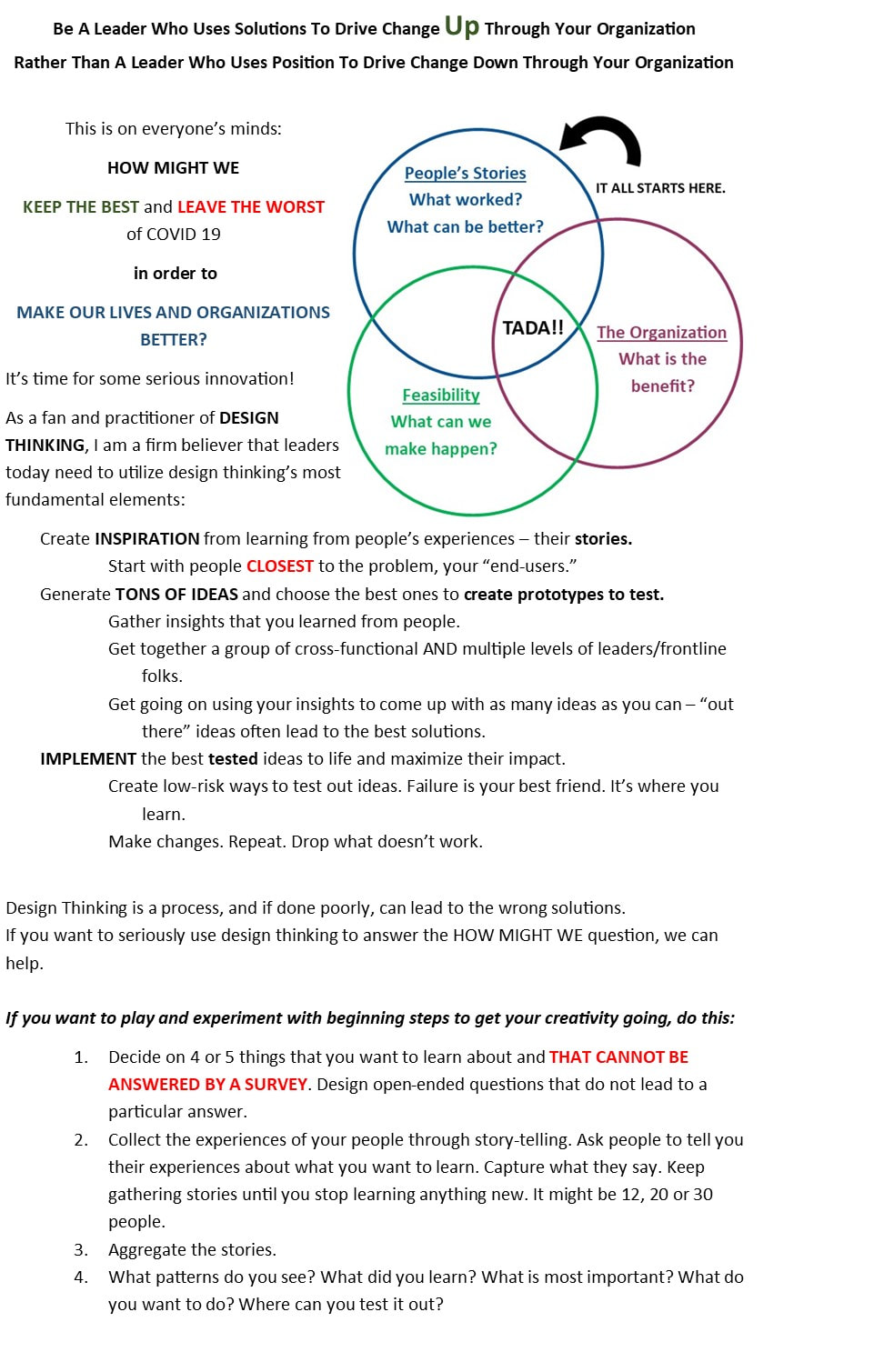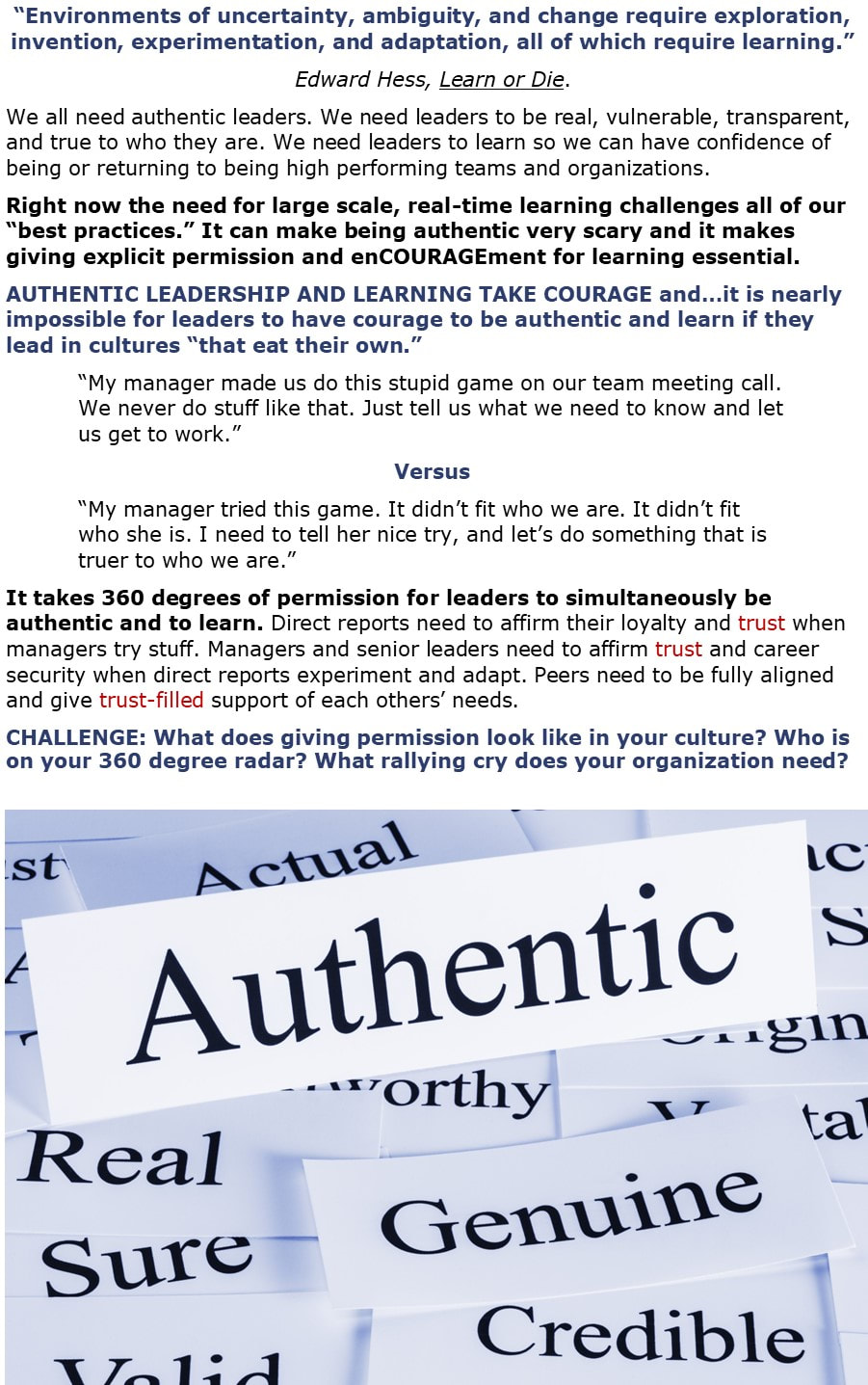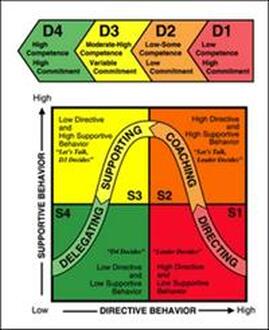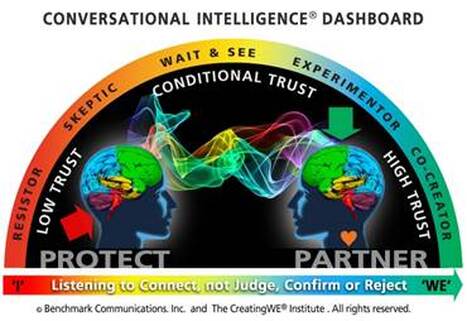|
This is another leadership reminder post. My intent is to offer something to scan and grab. When leaders are so focused in the present, some times "zooming" out and being reminded of leadership principles that may not be always accessed can be helpful. Below are four prompts from four sources of exemplary leadership skills and competencies. I hope you find something that is just what you need today.
THE LEADERSHIP CHALLENGE: Kouzes and Posner The foundation of the 5 practices and 30 statements of exemplary leadership comes from Kouzes’ and Posner’s research of thousands of “personal best” stories of leaders. Here is a quote from the 6th edition that hopefully increases the heat of your leadership seat: “The study of leadership is the study of how men and women guide others through adversity, uncertainty, and other significant challenges. It’s the study of people who triumph again overwhelming odds, who take initiative when there is inertia, who confront the established order, who mobilize individuals and institutions in the face of stiff resistance. It’s also the study of how people, in times of constancy and complacency, actively seek to disturb the status quo and awaken others to new possibilities. Leadership, challenge, and seizing the initiative are linked together. Humdrum situations simply aren’t associated with award-winning performances.” (p. 149) Today's Statements: What is the frequency people experience these with you?
DARE TO LEAD: Brene’ Brown, Leading Courageously If you are intrigued by or have heard about Brown and are not sure what she’s all about, her one hour talk on Netflix is an exceptional summary. She has a very entertaining presence and tells great stories that illustrate her research. 2 of 16 Toggle Statements for Moving from Armored Leadership to Daring Leadership FROM leading for compliance and control TO cultivating commitment and shared purpose. From: Normally about fear and power. Reduces work to tasks and making sure people do exactly what we want. When something goes wrong, blame is quickly discharged and we can believe that “I should have done it myself.” To: Explains the “why” and meaning. Defines what “done” looks like. Ensures ownership, accountability, authority, and requirements are complete. Builds trust. People police themselves. FROM zigzagging and avoiding TO straight talking and taking action. From: Spends energy avoiding and dodging “the bullets of vulnerability.” (Conflict, discomfort, difficulty, dislike) We procrastinate and do other justified “good” work in place of work we’re avoiding and do a great job rationalizing our actions. To: Turns around and faces “whatever is at our heels head-on.” Be aware of what we’re avoiding. Be clear about what needs to be done. Step into it. CONVERSATIONAL INTELLIGENCE®: The CreatingWE Institute Interactions/Psychological Safety/Trust
Trust and distrust can exist simultaneously because we generate them from two different places in our brains. Within any conversation (with others, with ourselves, in an email) the amount of trust and distrust we feel can ebb and flow. Low trust and fear arouses our amygdala (fight, flight, freeze, appease) and trust opens our executive brain (plan, organize, empathize, prioritize, complexity, memory). As conversations in your organization continue toward “what comes next,” create greater emotional safety and trust for partnering together toward the future. Be intentional about addressing the distrust and adjusting to build trust. Possible questions to ask individuals and teams: 1. On a scale of 1-10, what is your level of confidence of success about …? (Whatever is the topic of the conversation.) 1 is “No confidence, I don’t trust what is going on and I am in protection mode.” 10 is”Full confidence and I am ready to help make it happen.” 2. What can you say about why you chose your number? 3. What is an example of what could move your current number to 1 or 2 numbers higher? 4. What would make your number take a dive to a significantly lower number? If it will help, you use this dashboard to have people indicate where they currently land. |
AuthorJanet Mahrle, Coach, Consultant, Instructor, Facilitator ArchivesCategories |






 RSS Feed
RSS Feed
